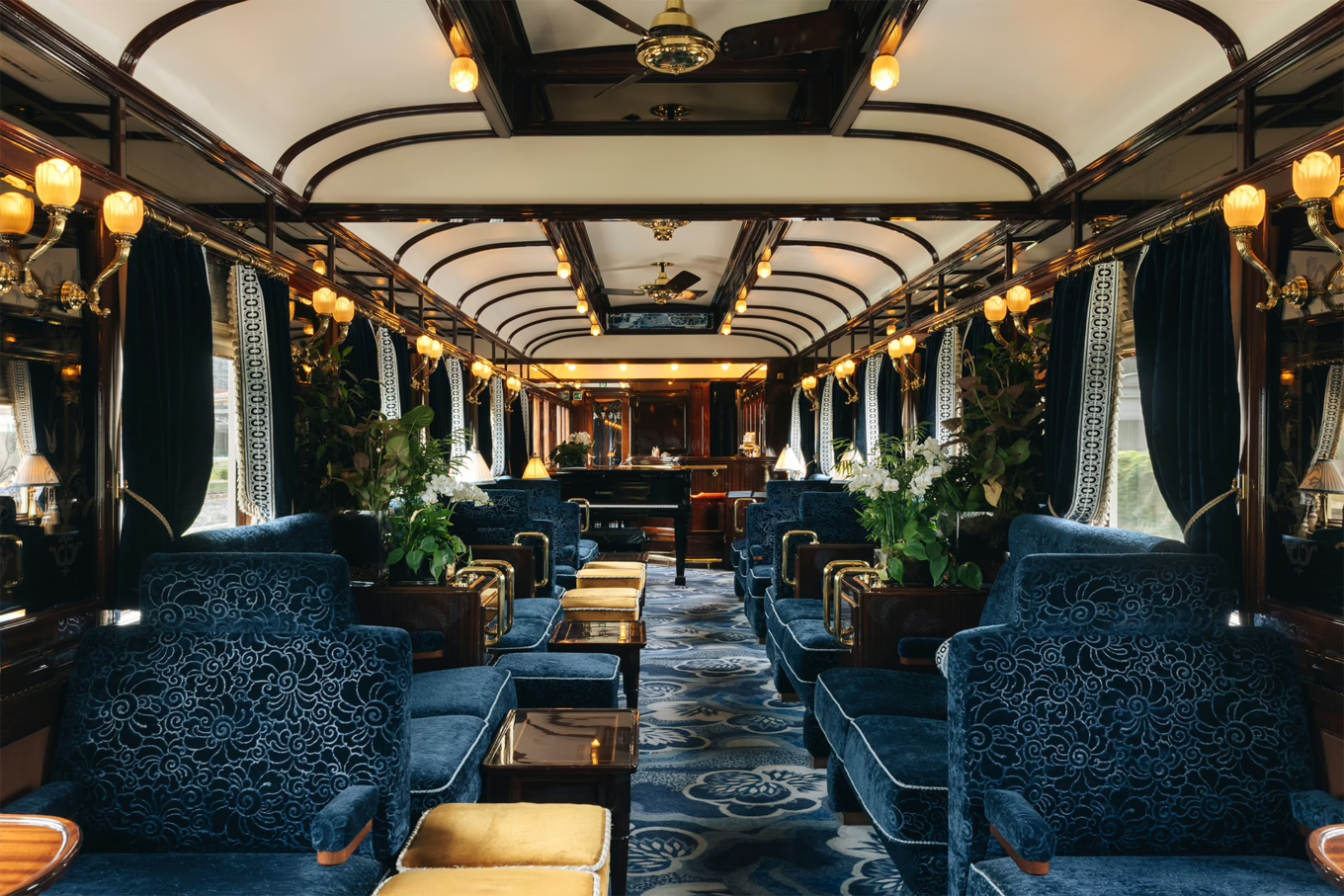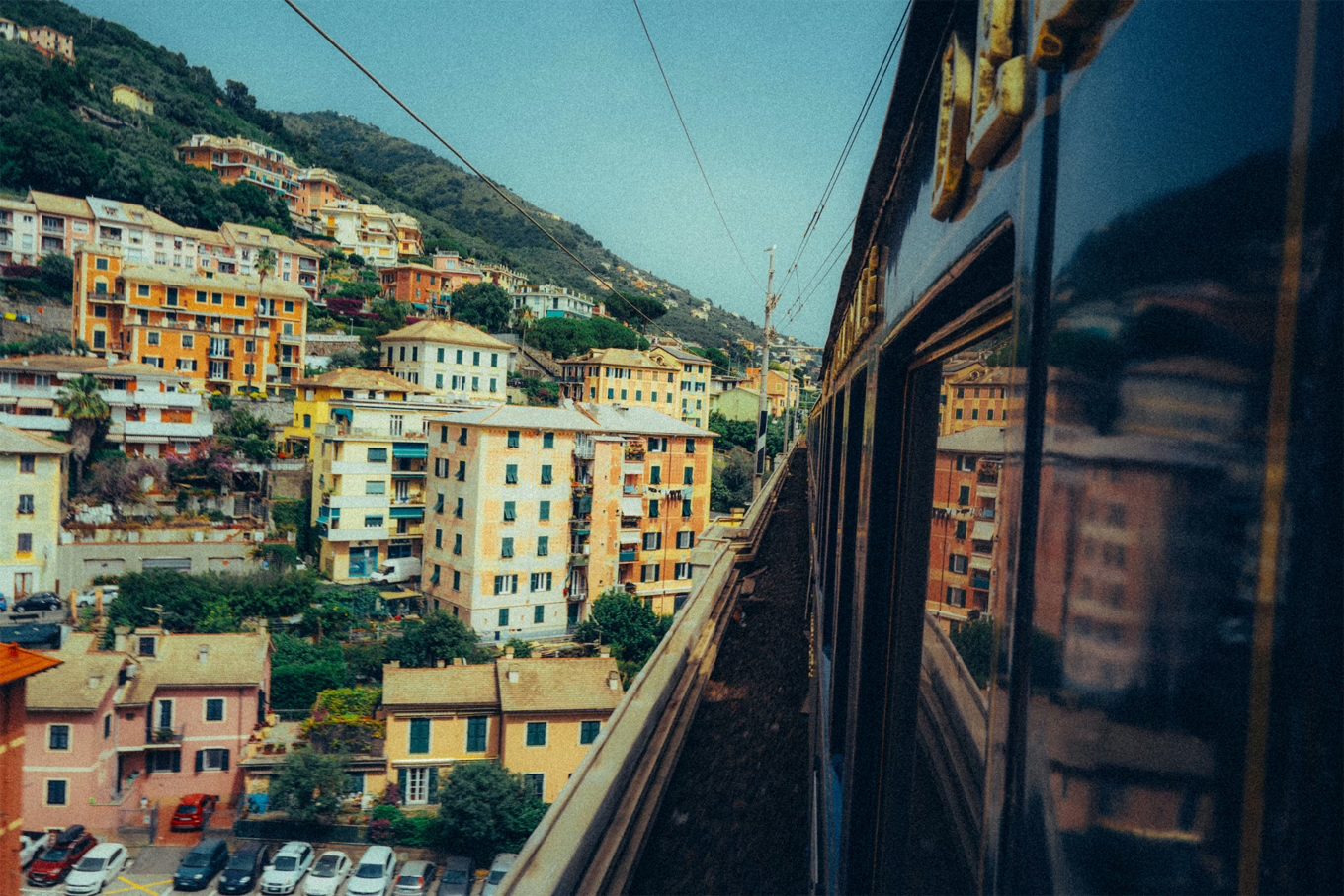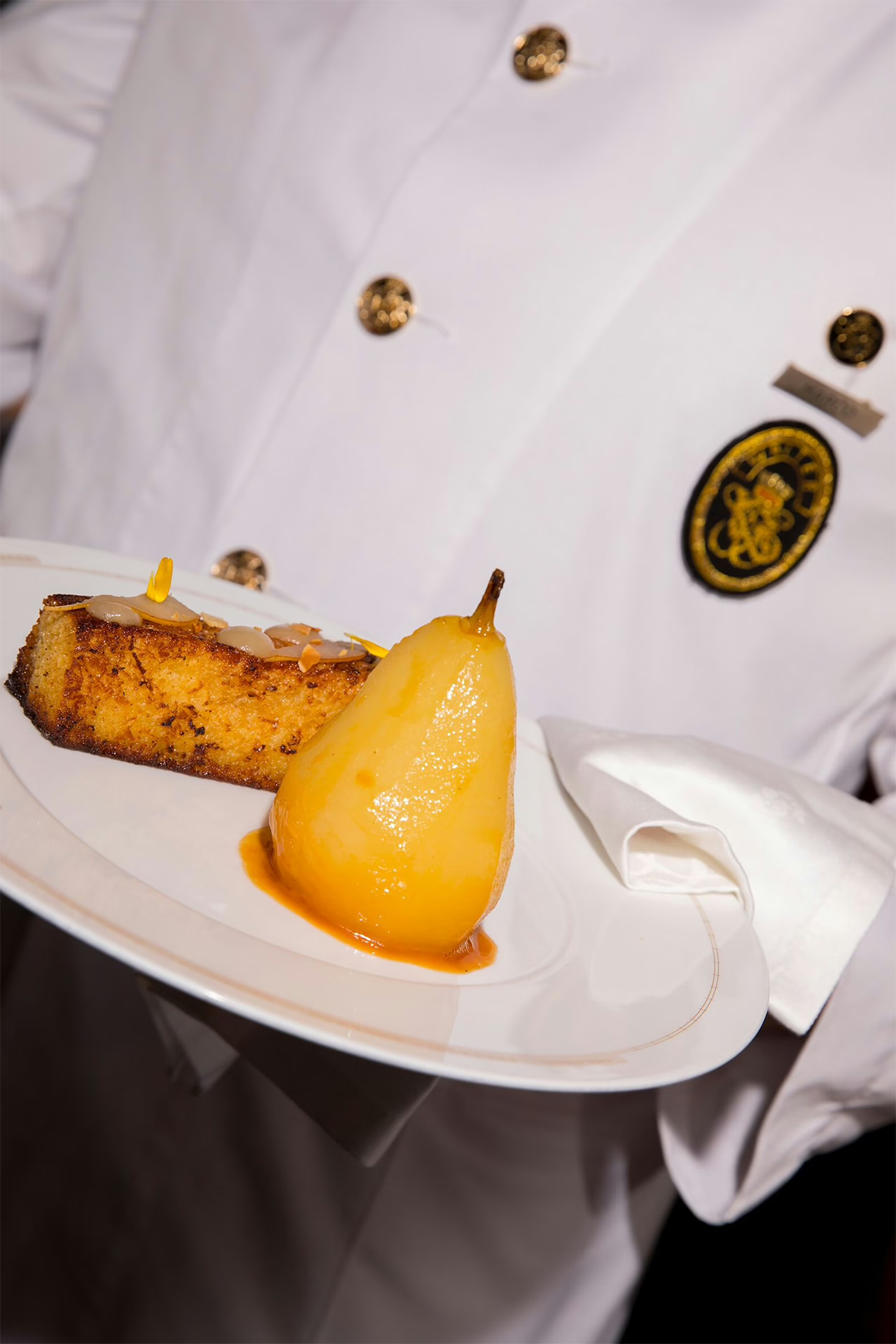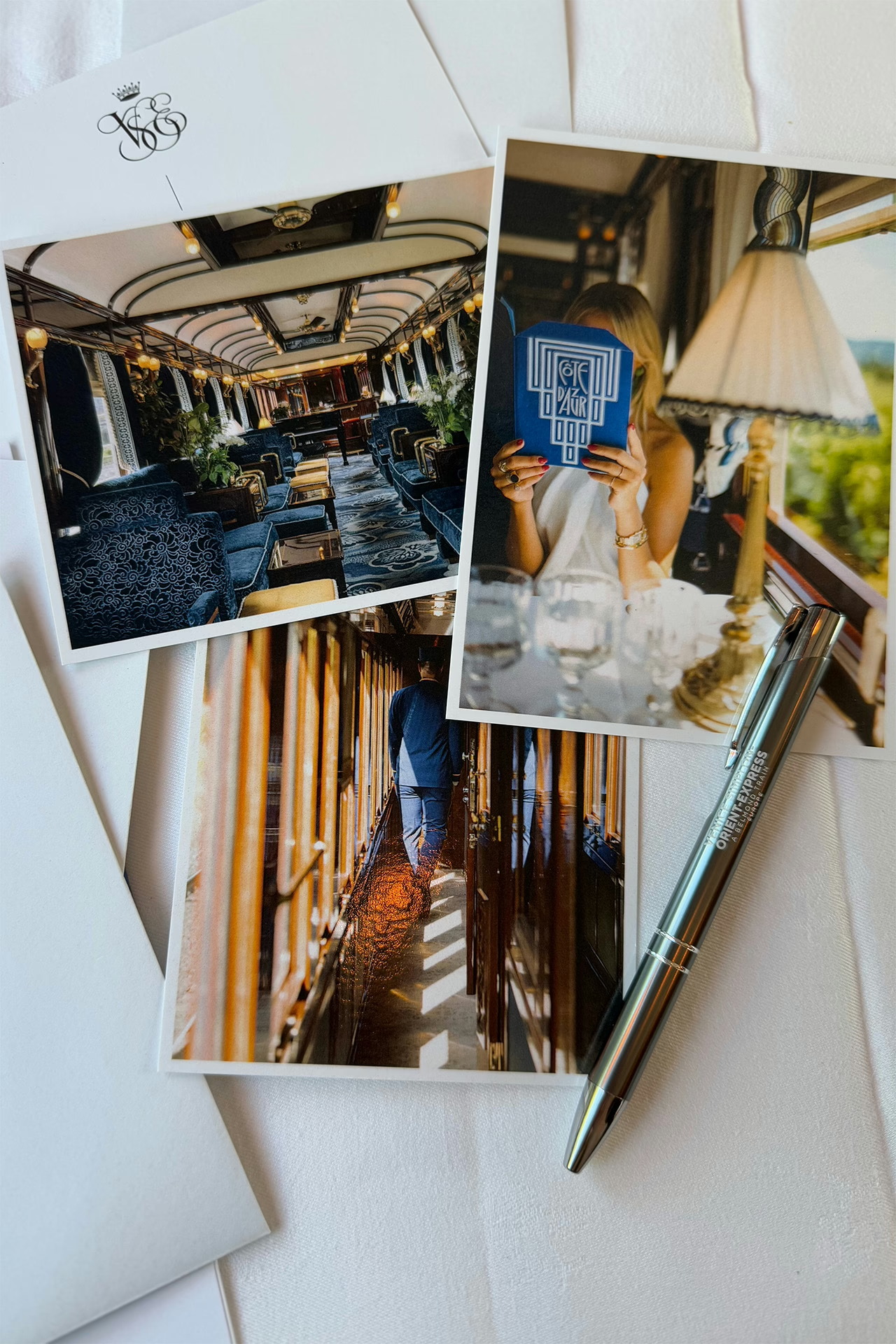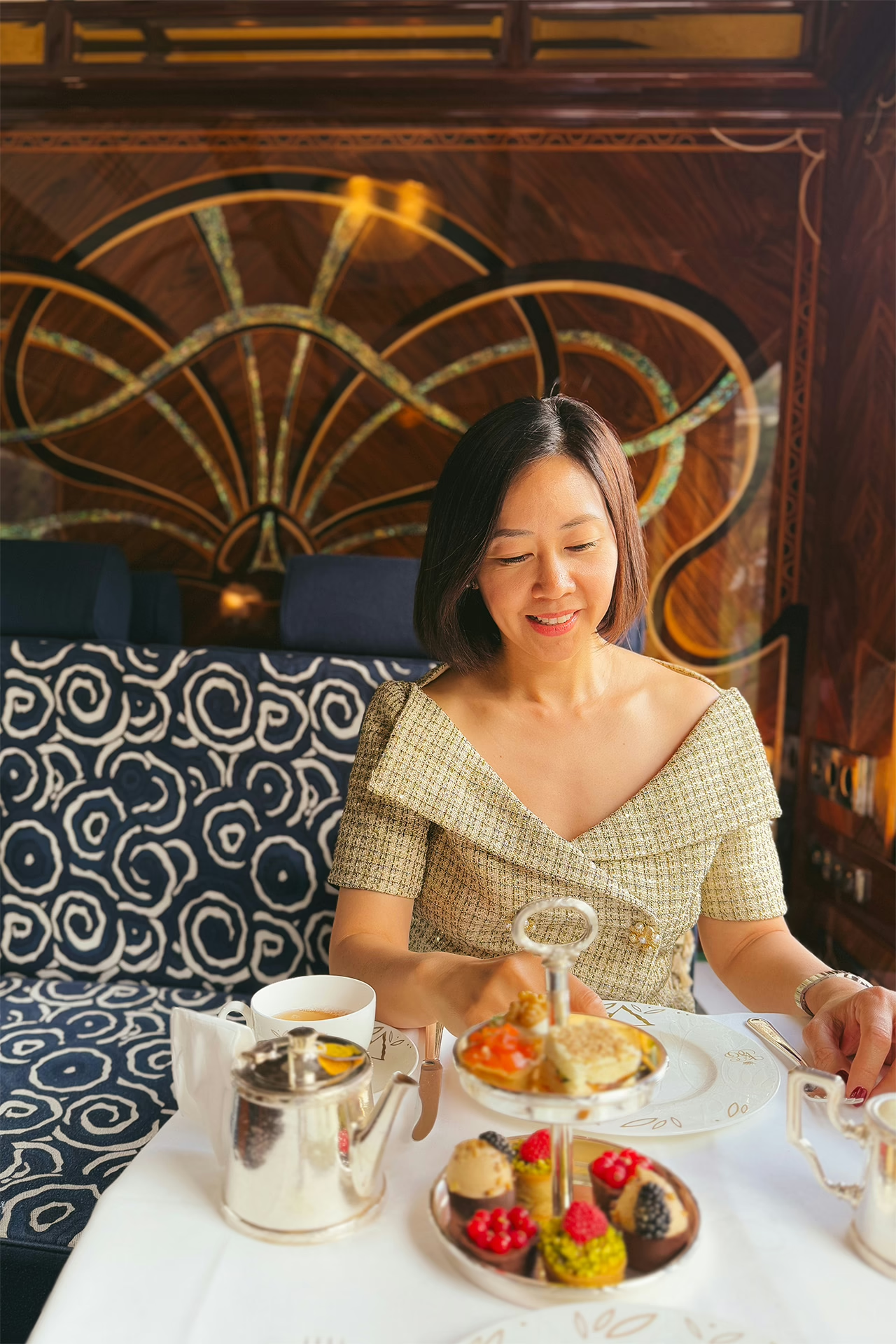Life takes an elegant turn aboard the Venice Simplon-Orient-Express from Italy to France, opening a window into the bygone glamour of the Art Deco era
You could taste the anticipation at Santa Lucia station as the legendary Venice Simplon-Orient-Express (VSOE) pulled into the platform. From random passers-by to excited passengers, everyone had their camera phones at the ready, like paparazzi with their roving lenses. Walking up close, the first thing I noticed was the train’s sparkling navy façade – each of the 15 carriages was polished to perfection. The wheels were so pristine that Catherine, our escort from Belmond, joked that “you could lick them”.
I had expected the VSOE to be beautiful, but I wasn’t quite prepared for just how much of a showstopper it was in person. With white-gloved porters buzzing around the platform and immaculately coiffed stewards leading guests onto the train, it felt like being in a scene from The Great Gatsby.
“Everyone knows about it, but not everyone is aware that it’s still running,” says renowned modern artist JR, who designed an opulent sleeper carriage for the VSOE, called L’Observatoire, which launched in April. “The train is the biggest celebrity of all. Have you seen how many people take pictures when it’s stopped at a station?”
As the setting of Agatha Christie’s Murder on the Orient Express and multiple references in films such as Mission Impossible: Dead Reckoning, its storied reputation precedes it. How does it compare to real life? I was about to find out.
Past perfect
Our steward Antonina stood in front of Carriage H and led my husband and I to Le Lac – one of the four suites with interiors styled in the mould of René Lalique, the Father of Art Deco, as well as Maurice Dufrêne, a decorative artist behind the Maîtrise workshop at Galeries Lafayette in the 1920s.
The train is a time capsule to the glamour of the Art Deco period, and it felt fitting that I was on board during the movement’s centenary. Introduced at the Paris Expo in 1925, Art Deco (short for French Arts Decoratifs) flourished in the Roaring Twenties and its influence hasn’t waned to this day.
The original 1920s and 1930s hand-restored carriages are an ode to that era – my suite was furnished with handsome wood marquetry with mother of pearl inlay, furniture swathed in sumptuous velvet and gold fringes and an en-suite bathroom clad in marble, with heated mosaic flooring too.
The other carriages carried the same look and feel, with wood so shiny you can see the scenery outside reflected on them. Ensconced in this decadent Art Deco bubble felt like being in a living, breathing and moving museum.
A moveable feast
The sound of popping champagne corks filled the carriage as the train pulled away from the station. Even the most jaded traveller would find it hard not to be swept away by the level of luxury on board. Only minutes in, it was clear that this would be a journey of a lifetime.
I had barely digested the welcome snacks and it was already time for lunch. We headed to the L’Oriental, a stylish restaurant car dressed in rich green, and I was served a glass of Veuve Clicquot as soon as I sat down. I tucked into sea bream with roasted vegetables and enjoyed another side dish: a mesmerising view of the mountains in Bolzano, Italy.
The signature overnight journey from Venice to Paris traverses five countries: Italy, Austria, Switzerland, Liechtenstein, France, along with stops at Verona and Basel. Crossing borders in Europe is second nature for most of us now, but a similar trip was extremely difficult, perhaps even dangerous, in the past. It brings into focus how much travel has progressed over the century, connecting us largely for the better.
We were arriving in Austria when Antonina came to the cabin bearing tea, coffee and a tiered tower stocked with petite sandwiches and dessert. There was a slight drizzle as we passed rolling hills of coniferous pine trees – a quick check on Google Maps showed we were crossing a ski resort – which explained why my ears were popping. You could easily get lost just looking at the dreamy, bucolic scenery; I barely read the book I brought for the trip.
Soon it was time for dinner and we headed to L’Etoile du Nord, one of the three original dining cars of the VSOE. While elsewhere we would be overdressed in an evening gown and a tuxedo, finery is par for the course aboard the Orient Express. There were guests in flapper ensembles and custom-made suits; going all out was positively encouraged.
Fog began to shroud the trees, making for a romantic start to the four-course meal. I was still in awe of how they serve – let alone cook – on a train moving at full speed. Not a plate out of place nor a drop of wine spilt by our server, Andrea, an Italian who, like everyone else we met, really seemed to love their work.
As we were enjoying the cheese course, a singer and live guitarist suddenly entered the restaurant car playing Nat King Cole’s “L-O-V-E”, with some of the servers joining in. When they arrived at our table, they serenaded us with Frank Sinatra’s “Somethin’ Stupid”, which coincidentally was my parents’ favourite song.
A shared connection
Aside from the set mealtimes – and there are plenty of them – there is nothing else on the itinerary. That’s exactly the point: reliving the Golden Age of travel means embracing the slower pace of the past, which includes sending postcards via snail mail (a special old-school touch aboard the Orient Express). This is the kind of relaxation that comes when the journey is your actual destination.
A pleasant surprise is the notable absence of people staring at their mobile phones. Guests were only using their devices to take pictures. As a result, conversations flowed as smoothly as the champagne was poured. This train is more than a luxurious journey – it offers a momentary escape from reality.
When I woke up the next day to flaky croissants and freshly brewed coffee in bed, everything that had unfolded the night before felt like a dream sequence. More than the exquisite meals curated by chef Jean Imbert, more than the incredible Art Deco interiors, more than the musicians sending us off with a song at Gare de l’Est in Paris, what I’ll remember most is how I felt like a better version of myself – that alone is priceless.
Three Paris must-stops for the Art Deco enthusiast
Stay. If you’re looking to experience Gatsby-esque indulgences, few addresses rival Le Bristol Paris – a grande dame celebrating its centenary in 2025. Its creamy limestone façade, a study in Art Deco elegance, stands out along Rue du Faubourg Saint-Honoré. Step through its doors and you’re transported further into the past: gilded salons, antiques and tapestries evoke the grandeur of 18th-century France, complemented with warm service to make you feel completely at home. Aside from relaxing in your palatial room, savour Michelin-starred cuisine at Epicure restaurant, explore the formal gardens or slip upstairs to discover the rooftop pool with sweeping views across the Parisian skyline.
Visit. Palais de Tokyo, Europe’s largest contemporary art centre, is a striking testament to the Art Deco era with bold lines and geometric grace echoing the symbols of the Jazz Age. Across Paris, there are a handful of museums that are also great for an Art Deco immersion: the Musée des Arts Décoratifs has permanent galleries dedicated to the influential movement, while the Musée des Années 30 in Boulogne-Billancourt overflows with treasures – paintings, sculptural furnishings and architectural models that capture the daring spirit of the 1930s.
Eat. Credited for inventing the modern oyster bar, the iconic Parisian caviar house Prunier opened its doors in 1924 and is still stealing hearts today. Just steps from the Arc de Triomphe on Avenue Victor-Hugo, the original maison has been reimagined as Prunier by Yannick Alléno. Its shimmering teal mosaic façade makes this Art Deco jewel impossible to ignore, while refreshed interiors, draped in sumptuous Pierre Frey fabrics, elevate the experience further.


